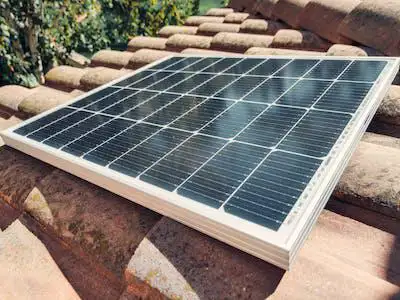Investing in a solar roof is a significant decision, and understanding its lifespan is paramount for weighing its long-term value. Worry not, for this comprehensive guide delves deep into the world of solar longevity, uncovering the secrets of their endurance and unveiling the factors that influence their lifespan.
The Enduring Essence of Solar Panels:
At the heart of every solar roof lies the photovoltaic (PV) panel, a marvel of modern technology that converts sunlight into electricity. These panels are built to withstand the elements, boasting sturdy frames crafted from aluminum or steel, and topped with tempered glass for weatherproofing. The inner workings, comprising silicon cells and conductive elements, are meticulously sealed to ensure optimal performance for years to come.
The 25-Year Benchmark:
Generally, the industry standard for solar panel lifespan is 25 to 30 years. This impressive longevity stems from the inherent durability of their materials and the meticulous manufacturing processes employed. In fact, many panels installed in the 1980s are still generating electricity efficiently, a testament to their enduring nature.
The Gentle Decline: Power Output Over Time
While solar panels excel in longevity, they aren't immune to the passage of time. Over the years, a phenomenon called degradation causes their power output to gradually decrease. This decline is typically minimal, averaging around 0.5% per year.
So, what does this mean for your electricity generation? After 25 years, your panels might produce around 90% of their initial output – still a significant contribution to your energy needs!
Unveiling the Factors that Shape Lifespan:
Several factors can influence the lifespan of your solar roof beyond the inherent qualities of the panels themselves. Let's explore some key players:
Panel Quality: Choosing high-quality panels from reputable manufacturers is crucial. Renowned brands prioritize rigorous testing and utilize premium materials, ensuring extended performance.
Installation Expertise: Proper installation is vital for optimal longevity. Experienced installers ensure secure mounting, proper wiring, and adherence to best practices, safeguarding your investment.
Environmental Conditions: Extreme weather events like hailstorms or heavy snowfall can impact panel performance and durability. Choosing panels certified for your specific climate zone is essential.
Maintenance Matters: While solar panels are low-maintenance wonders, occasional cleaning to remove debris and inspections for potential damage can go a long way in extending their lifespan.
Beyond the Panels: The Roof Itself
When discussing solar roofs, it's important to remember that they're a two-in-one system. The underlying roof structure plays a crucial role in overall longevity.
Roof Type and Age: Asphalt shingle roofs typically last 15-30 years, while metal roofs boast lifespans of 40-70 years. Matching your solar panel system to the remaining lifespan of your existing roof is crucial for cost-effective integration.
Roof Maintenance: Regular roof inspections and upkeep ensure a structurally sound base for your solar panels, preventing potential leaks or damage that could compromise their performance and lifespan.
Warranties: A Safety Net for Your Investment
Reputable solar panel manufacturers and installers offer warranties that provide valuable peace of mind. These warranties typically cover both power output and physical defects for a specified period, often 25 years or more.
In the unlikely event of performance issues or panel damage within the warranty period, you'll be covered for repairs or replacements, safeguarding your investment.
The Future of Solar: Brighter Than Ever
Technological advancements in solar panel materials and manufacturing processes are constantly pushing the boundaries of longevity. Research into alternative materials like perovskites and improvements in cell efficiency promise even longer lifespans for future generations of solar panels.
Living Off the Sun: A Rewarding Journey
Investing in a solar roof is a decision that extends far beyond mere energy generation. It's a statement of environmental responsibility, a commitment to sustainable living, and a potentially lucrative investment in your future energy independence.
By understanding the lifespan of solar roofs and the factors that influence it, you can make informed choices, maximize the benefits of this clean technology, and bask in the glow of a brighter, more sustainable future for generations to come.
Remember:
While solar panels experience power output degradation over time, their lifespans typically range from 25 to 30 years.
Choosing high-quality panels, opting for expert installation, and practicing proper maintenance play a crucial role in maximizing their lifespan.
Roof type and age also influence the overall system's longevity, so careful planning

